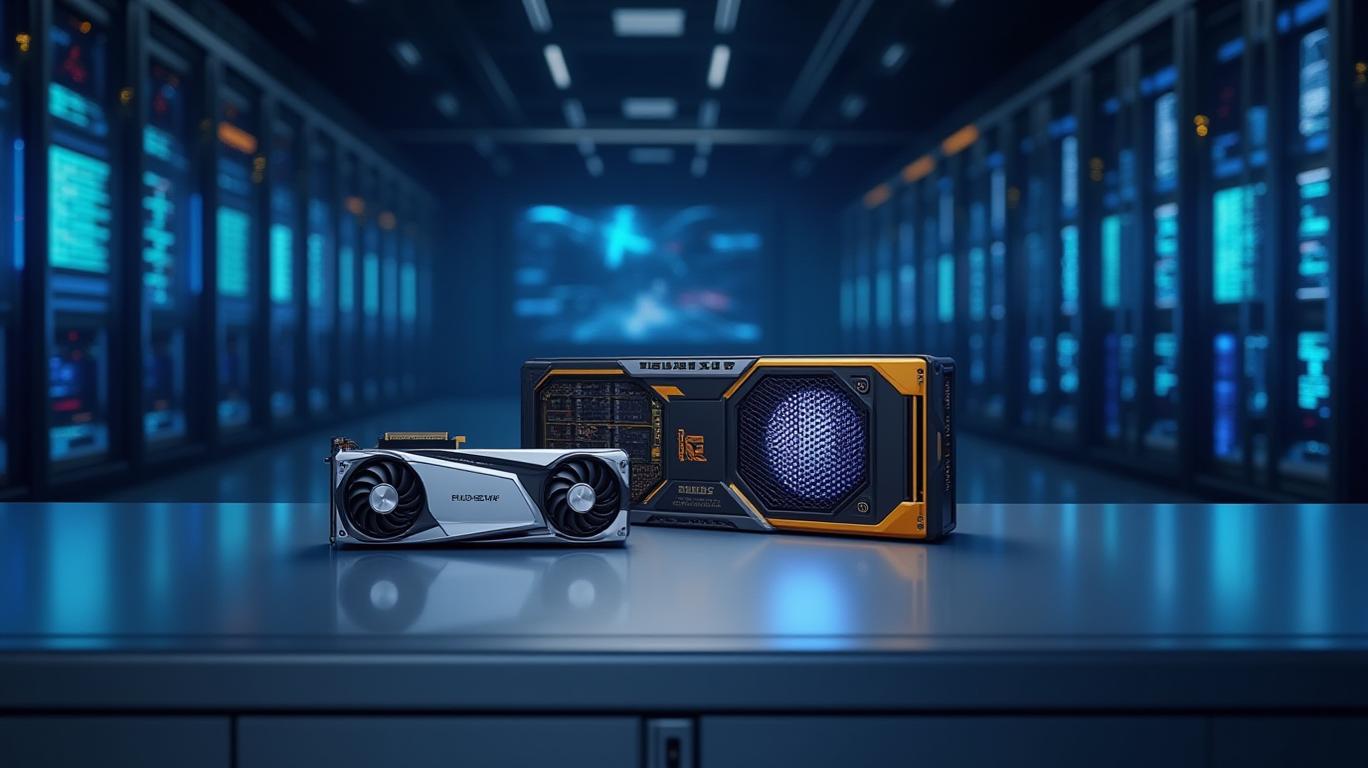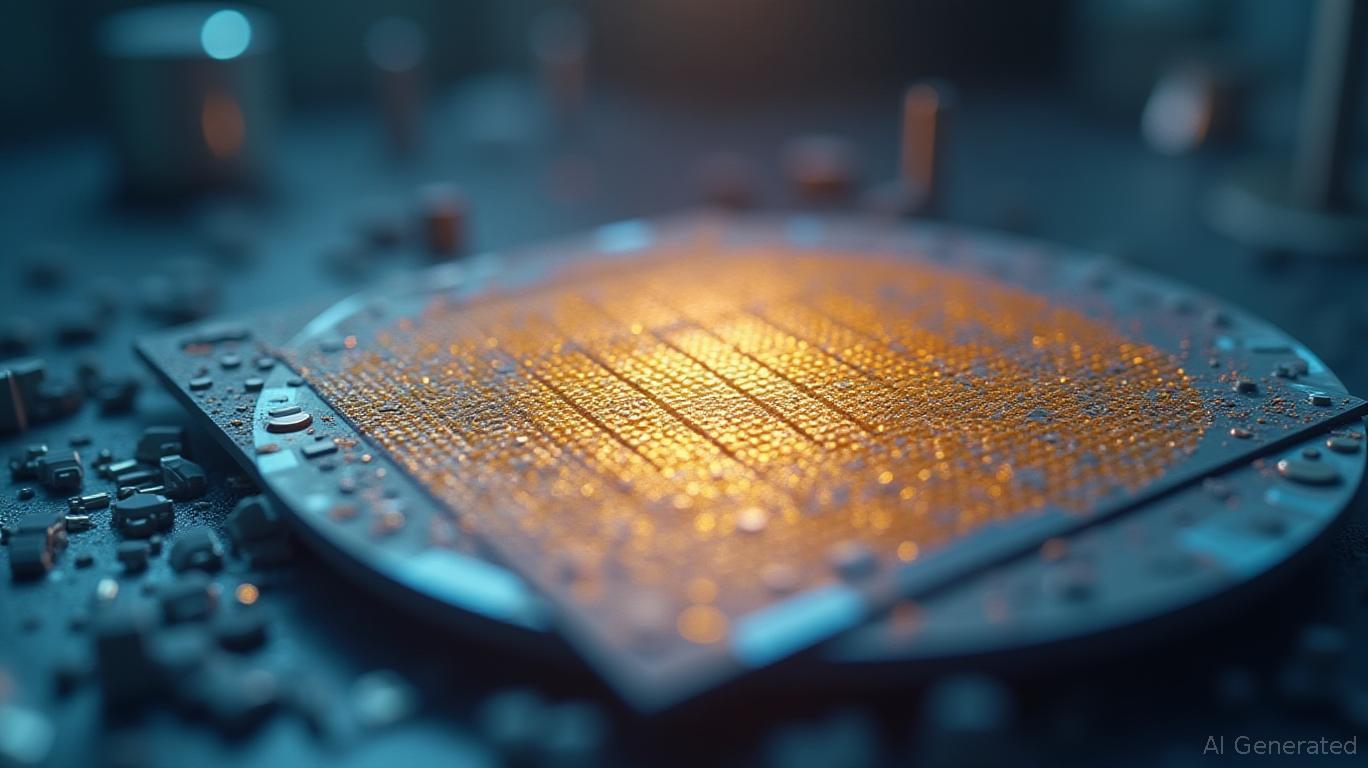DuPont Soars on AI-Driven Electronics Growth: A Strategic Spin-Off and Market Leadership Play
DuPont’s first-quarter 2025 results underscore a pivotal shift in its business trajectory, with its electronics unit emerging as the primary driver of earnings growth amid surging demand for advanced AI chips. The company’s adjusted EPS of $1.03, a 30% year-over-year increase, beat estimates by 9 cents, while net sales of $3.1 billion topped expectations. This outperformance is rooted in the electronics segment’s exceptional performance, which is now poised to unlock further value through a strategic spin-off. Let’s dissect the opportunities and challenges shaping DuPont’s future.

The AI Chip Boom and DuPont's Electronics Momentum
DuPont’s ElectronicsCo segment delivered a 14% organic sales surge to $1.12 billion in Q1 2025, driven by low double-digit growth in semiconductor technologies and high-teens gains in interconnect solutions. The demand is fueled by AI infrastructure needs, including advanced packaging, thermal management, and high-frequency materials for servers and data centers. Key products like DuPont™ Circuposit™ SAP8000 electroless copper and Microfill™ SFP-II-M acid plating copper are critical to enabling the miniaturization and performance required for next-gen AI chips.
The segment’s operating EBITDA of $373 million expanded to a 33.4% margin, outpacing the rest of the company, and contributed $0.19 to the EPS increase. This performance reflects not just market tailwinds but also DuPont’s strategic focus on high-growth areas like semiconductor advanced nodes and thermal management solutions.
Financial Highlights: Beating Estimates with Margin Expansion
DuPont’s Q1 results highlight two key strengths:
1. Volume Growth: ElectronicsCo’s 16% volume increase offset a 2% pricing decline, underscoring demand resilience.
2. Margin Discipline: The segment’s 33.4% EBITDA margin contrasts sharply with the slower 2% organic growth in its IndustrialsCo segment, which includes construction and automotive markets.
The company’s full-year outlook calls for 6-7% organic sales growth in ElectronicsCo, supported by AI-driven demand. Even with $60 million in annual tariff-related costs, DuPont’s mitigation strategies—including supply chain reconfiguration and surcharges—have minimized impacts on profitability.
Strategic Spin-Off: Qnity’s Potential and Market Opportunities
The planned separation of ElectronicsCo into a standalone entity named Qnity by November 2025 is a game-changer. As a pureplay electronics materials provider, Qnity will target markets like semiconductor advanced nodes, 5G infrastructure, and AI server components. The spin-off aims to unlock shareholder value by focusing on high-growth areas while freeing DuPont to concentrate on its core businesses, such as water purification and medical packaging.
Analysts see this move as critical for unlocking Qnity’s full potential. The segment’s 2024 EBITDA of $1.717 billion and 29% margin suggest it could command a premium valuation post-separation. With Form 10 filings completed and leadership in place, the execution risk is now minimal.
Challenges and Risks on the Horizon
While momentum is strong, risks remain:
- Tariff Exposure: The $60 million annual tariff cost could rise if trade tensions escalate, though mitigation efforts have already softened the blow.
- Spin-Off Timing: Delays in regulatory approvals could disrupt the November 2025 target.
- Market Volatility: Semiconductor demand could cool if AI adoption slows or geopolitical factors disrupt supply chains.
DuPont’s 2025 guidance of $4.30–$4.40 EPS, slightly above estimates, assumes these risks are manageable.
Conclusion: Positioning for Long-Term Growth in Tech and Beyond
DuPont’s Q1 results and strategic moves position it as a leader in the AI chip revolution. With its electronics segment driving a 30% EPS jump and a $67.16 stock price (up 1.68% premarket), the company is capitalizing on secular trends in semiconductors and advanced materials. The spin-off of Qnity is a masterstroke, isolating high-growth tech assets while allowing DuPont to refocus on its core markets.
The data is compelling: ElectronicsCo’s 14% sales growth, 33.4% margin, and $373M EBITDA in Q1 are unmatched within DuPont’s portfolio. With AI’s global spending projected to exceed $150 billion by 2025 (per IDC), the segment’s products—critical for server CPUs, GPUs, and advanced packaging—are well-positioned to capture this upside.
Investors should take note: DuPont’s stock, already up 14% year-to-date, could see further gains as Qnity’s separation unlocks value. While risks remain, the company’s execution to date and alignment with tech’s future make it a compelling investment in this era of AI-driven innovation.


_442a2dcc1749832873286.jpeg)
_e68fac6d1749831664430.jpeg)






